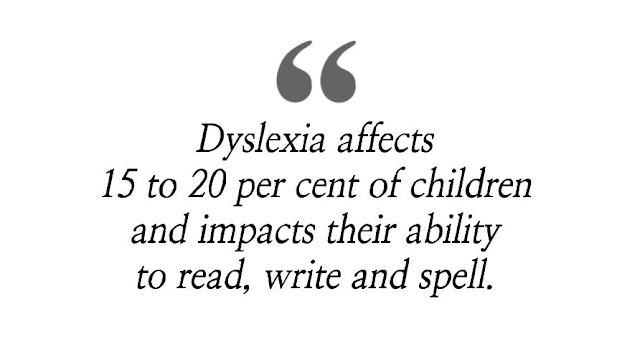Let's Talk About Dyslexia
Monday, October 21, 2019
This post is in partnership with Dyslexia Canada.
During my early years, I struggled to see the blackboard at school. Unbeknownst to me at that time, this greatly affected my learning in class. It wasn't until my teacher caught me squinting and struggling to copy from the board that it was suggested that I get my eyes checked. Luckily, I was able to correct my vision with a pair of prescription glasses. But the point I want to make here is that, until my teacher intervened, I had always thought that the blurred vision I had experienced was what everyone else was experiencing, too. Now I find myself asking if young children with dyslexia feel the same way. And would I be able to recognize possible indicators of dyslexia in my own students?
Let's Talk About Dyslexia
Before we look at how we can recognize dyslexia, let's first identify what dyslexia is and how it affects us. Dyslexia is a specific learning disability that affects 15 to 20 per cent of children and impacts their ability to read, write and spell. Since dyslexia affects the way the brain deciphers letters and words, people with dyslexia often have trouble putting letters and words together, resulting in a confusing experience. This, therefore, makes it difficult to spell, write and read accurately and fluently. According to Dyslexia Canada, "dyslexia affects everyone equally, regardless of gender, socio-economic or ethnic background." While there is no cure for dyslexia, it can, with early identification and proper instruction, be managed.
How to Recognize Dyslexia
Identifying children with dyslexia is not as simple as getting your eyes checked by an optometrist. There are a variety of look-fors and assessments, as well as professionals such as psychologists, that are needed before making an official identification. However, parents, caregivers and teachers can still keep an eye out for the following indicators of dyslexia, which can be seen as young as preschool.
Children with dyslexia may:
- have difficulty rhyming
- have difficulty learning and remembering letter names and their sounds
- have difficulty sounding out simple words like "cat" and "nap"
- shy away from participating in class
- have a parent or sibling who lives with dyslexia
What Parents can do to Help
First and foremost, you know your child well and can best gauge whether or not something does not feel "right". While signs of dyslexia may be overlooked or attributed to a delay in learning, consider completing a checklist or an informal screener online. If you notice your child exhibits several signs, you can request an assessment through the school board or a private assessment.
- Speak to your child's school and open a dialogue that will help to support her/him by providing information and direction to those who work with your child.
- Identify your child's strengths and encourage her/him to demonstrate knowledge by way of these strengths, such as providing an oral report in lieu of a research project.
- Help your child explain their disability and empower them to ask for the help to which they are entitled.
- Support Dyslexia Canada’s awareness campaign by visiting www.dyslexiacanada.org/mark-it-read and join the conversation on social media by sharing the images of the buildings and monuments lit up using #markitread and #dyslexiacanada. (For my friends here in Toronto, did you notice that the Toronto 3D sign was lit up on October 20?)
For more information and to take an online dyslexia screen for adults or children, Canadians can visit www.DyslexiaIDA.org. Or visit www.DyslexiaCanada.org/assessors to locate a dyslexia assessor near you.



























0 COMMENTS
Thanks for taking the time to leave a comment here on Toronto Teacher Mom. Hope you have a great day!